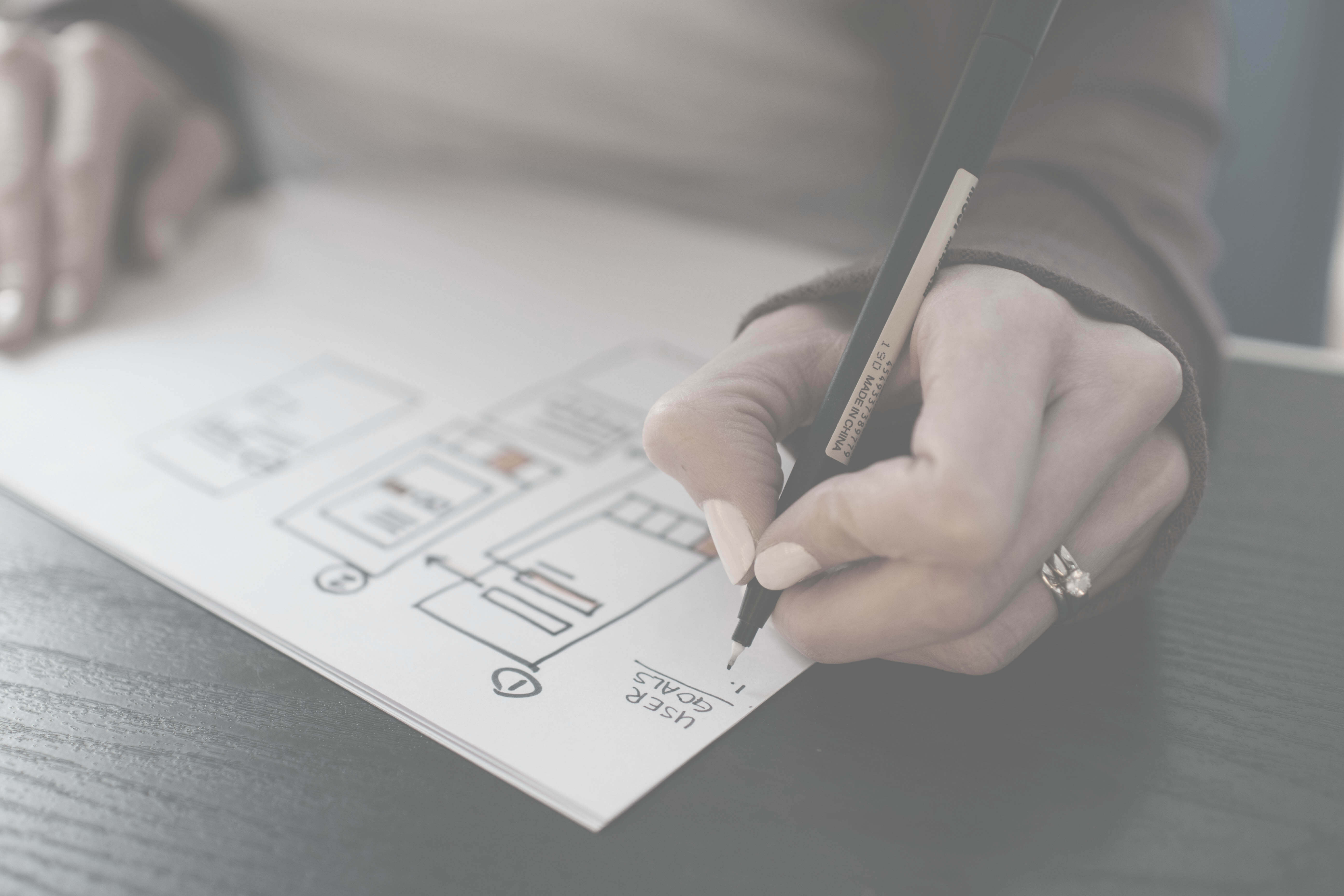
Overview
Ten Gun Design frim from Edmonds, Washington worked with our capstone of the User Experience Minor. They presented us with a fictional company called “Mason Homes”. This company designs and builds prefabricated smart-homes with the intent to reach net zero energy and focus on implementing connected technologies into everyday life.
The Challenge
Our UX challenge was to positively change a homeowners utility consumption through an display of real-time data and create a developing habit-forming product. We worked in multidisciplinary teams to tackle this challenge. Our team of 4 represented 3 different disciplines: Graphic Design, Industrial Design and Computer Science(myself).

The Brief
Ten Gun suggested exploring avenues that would motivate users to create an actual change in their daily habits regarding utility consumption. We were also encouraged to explore innovative technology, namely OLED technology. The project also provided an opportunity to design an interface that functions within a fully connected home seamlessly and practically.
audience demographic

Our target demographic comprises tech-savvy home buyers. They are aspirational individuals but have a lack of patience for poorly designed technology that wastes their time.
Market Research
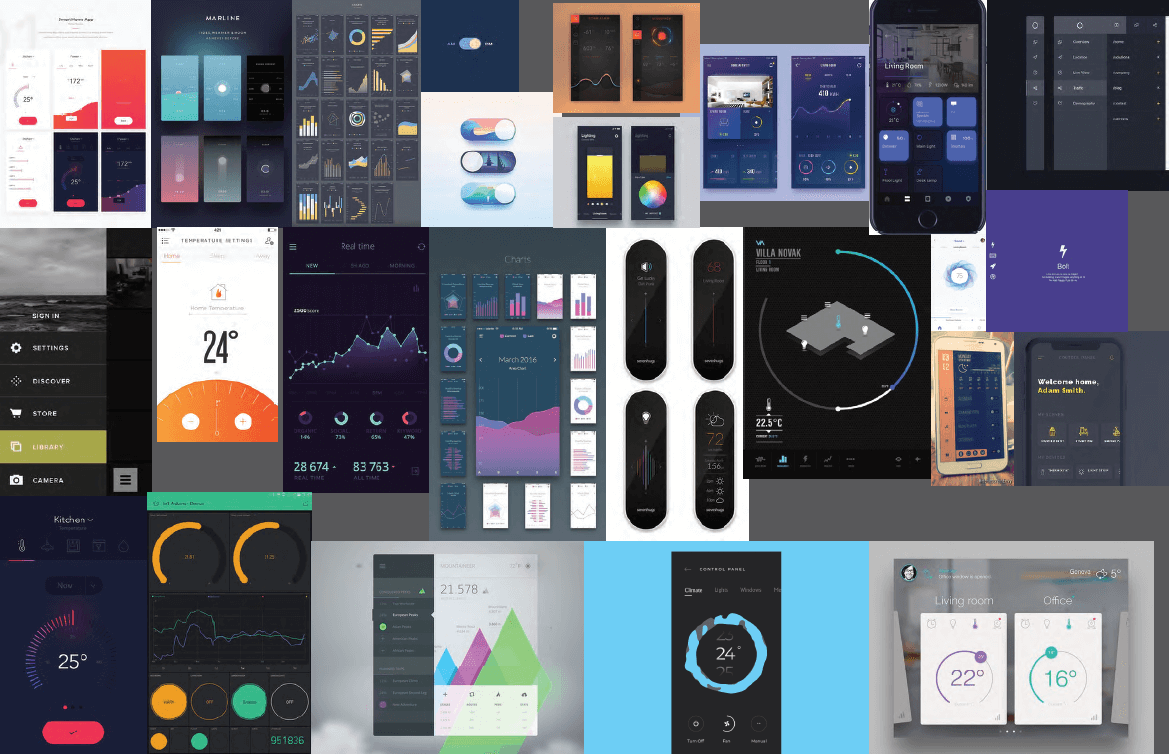
We began by creating a survey and sending it out to a broad audience. We then collected data from over 60 responses. The participants showed concern with the environment but they ultimately cared about the impact on their wallet when it came down to why they would use this application for resource management.
We began by creating a survey and sending it out to a broad audience. We then collected data from over 60 responses. The participants showed concern with the environment but they ultimately cared about the impact on their wallet when it came down to why they would use this application for resource management.
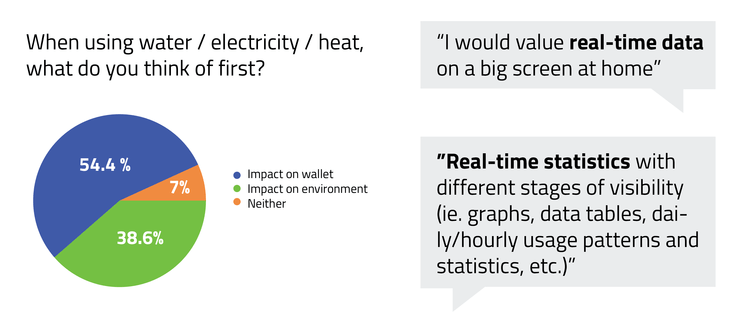
Proposed Solution
It's important to show homeowners the impact their utility usage has on the environment AND their wallet. Our research participants were interested in tools that track their resource consumption and conveniently display real-time results. This should monitor all energy and resource consumption in the house, displaying this information in a way to motivate them to take steps toward reducing their resource usage instead of scaring them into it.

Benefit Statement
A platform that displays all the household resource consumption data in one interface. This platform would allow the user to monitor and control these resources. The interface can help the homeowners save money and resources by providing recommendations/presets.
Storyboards
We created storyboards to get a better grasp of the features that made the most sense to offer and how users would interact with each feature. I drafted ideas of scenarios in which certain features would be most beneficial to our users such as a goal-setting feature, problem-solving scenario, and possible house modes. My team then turned those ideas into storyboards.
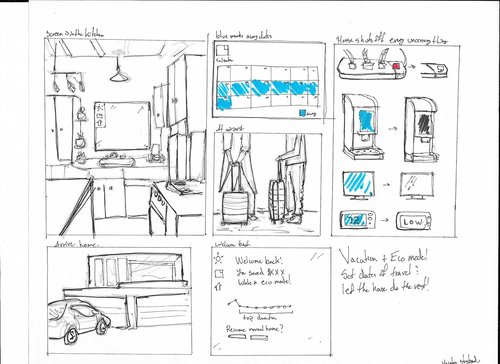
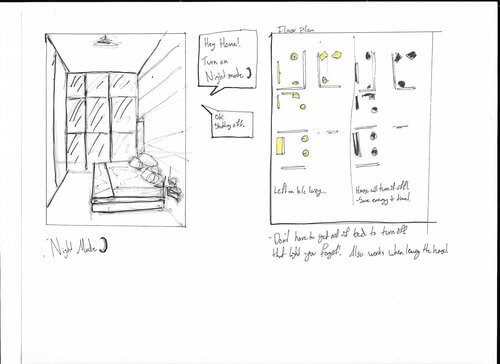
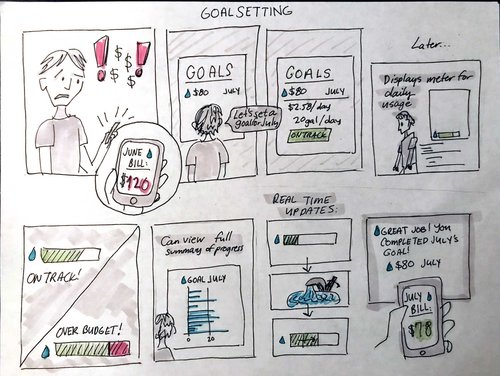
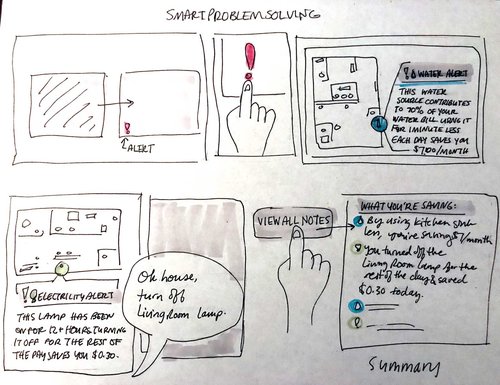
User Flows

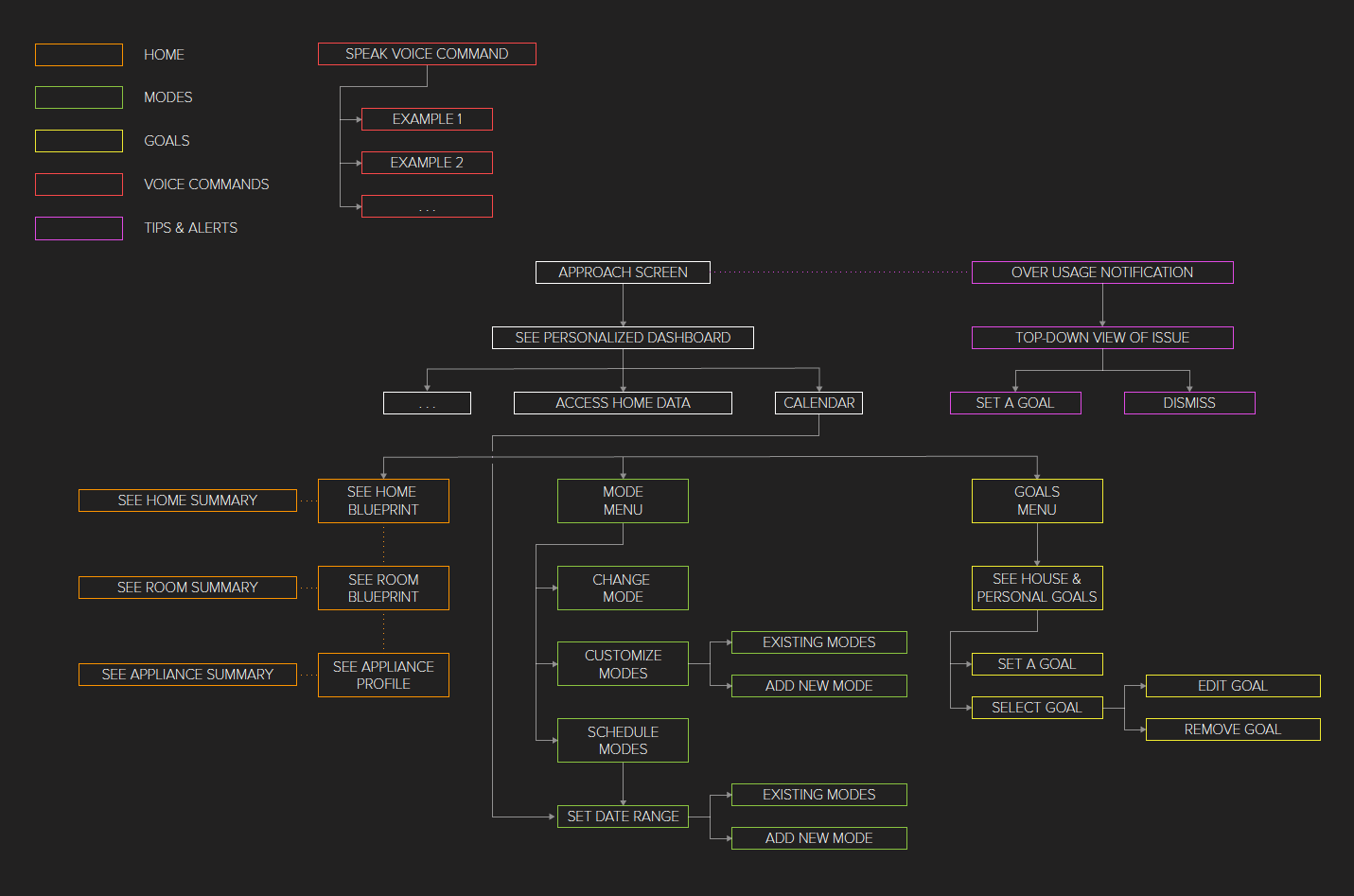
prototyping and user testing
After creating prototypes, I observed how the users were interacting with our features. I recorded what was not clear and noted the feedback that users provided based on their experience with our model. I reported back to my team what I observed during testing and what needed to be modified to deliver a better experience.

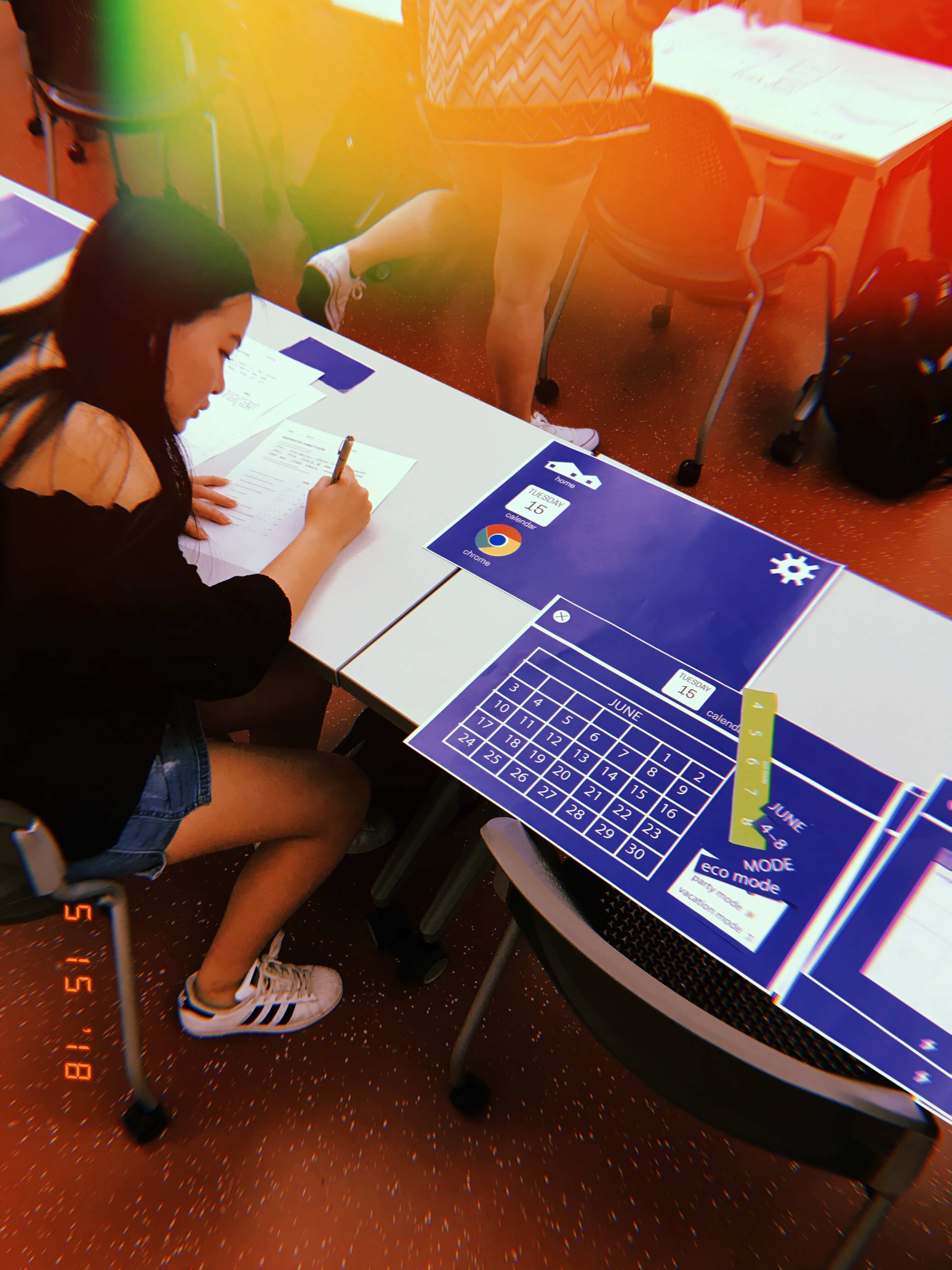
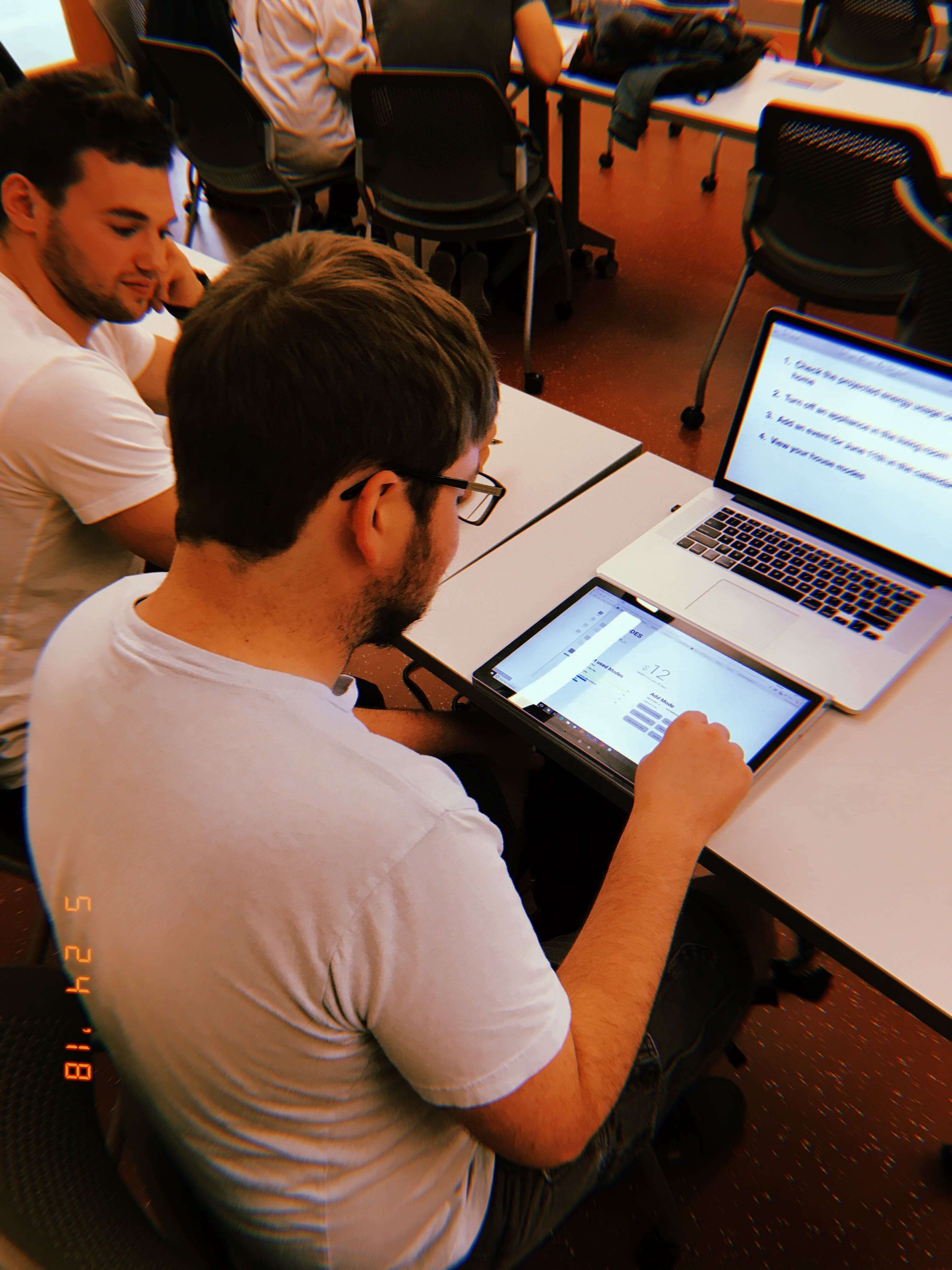
Solution
We arrived at our solution after lots of testing and prototyping. The feedback from our testing subjects gave us the information we needed to redesign and reorganize our decisions. What is unique about this solution is its 'mode' settings that automatically trigger responses in the home that will save the homeowner money instantly.
Most participants showed interest in a pre-installed display in the kitchen where most home appliances exist. From this display, they wanted to see in-depth data and easy to interpret information/graphics.
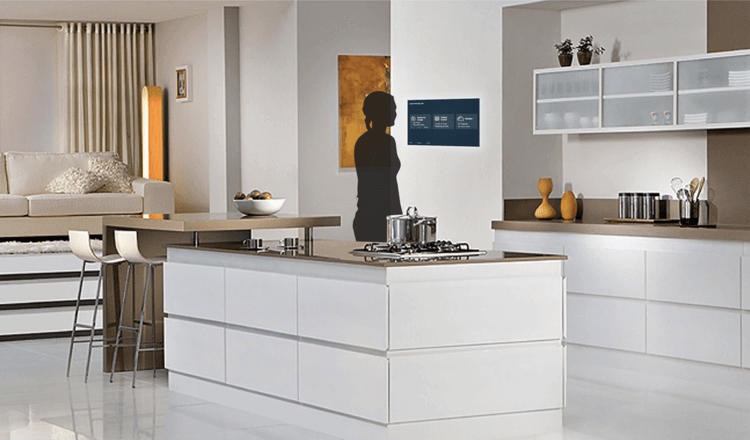





Presentation
We presented our project at Ten Gun Design studio in Edmonds, Washington. Everyone was supportive of the mode concept and appreciated the idea that users could set modes easily and in advance through the calendar feature. This aspect of the project was important to our overall design. We were pleased with the value they saw in our system design.
Presenting at the studio allowed us to receive constructive feedback. One thing they suggested was building out the blueprint of the house to show the abilities to tap into each room and control specific appliances. They also pointed out that some rooms may naturally consume more energy than others and asked how we could make sure that users knew of which rooms needed more attention. We can see a potential solution to this problem by creating an algorithm that considers that issue and "weighs" each room differently. Most trafficked rooms would be weighted with the fact that they are used every day.
Overall, this experience was extremely valuable. To work with Ten Gun Design and work from within a multidisciplinary UX team has helped me develop and design user-centered projects.
